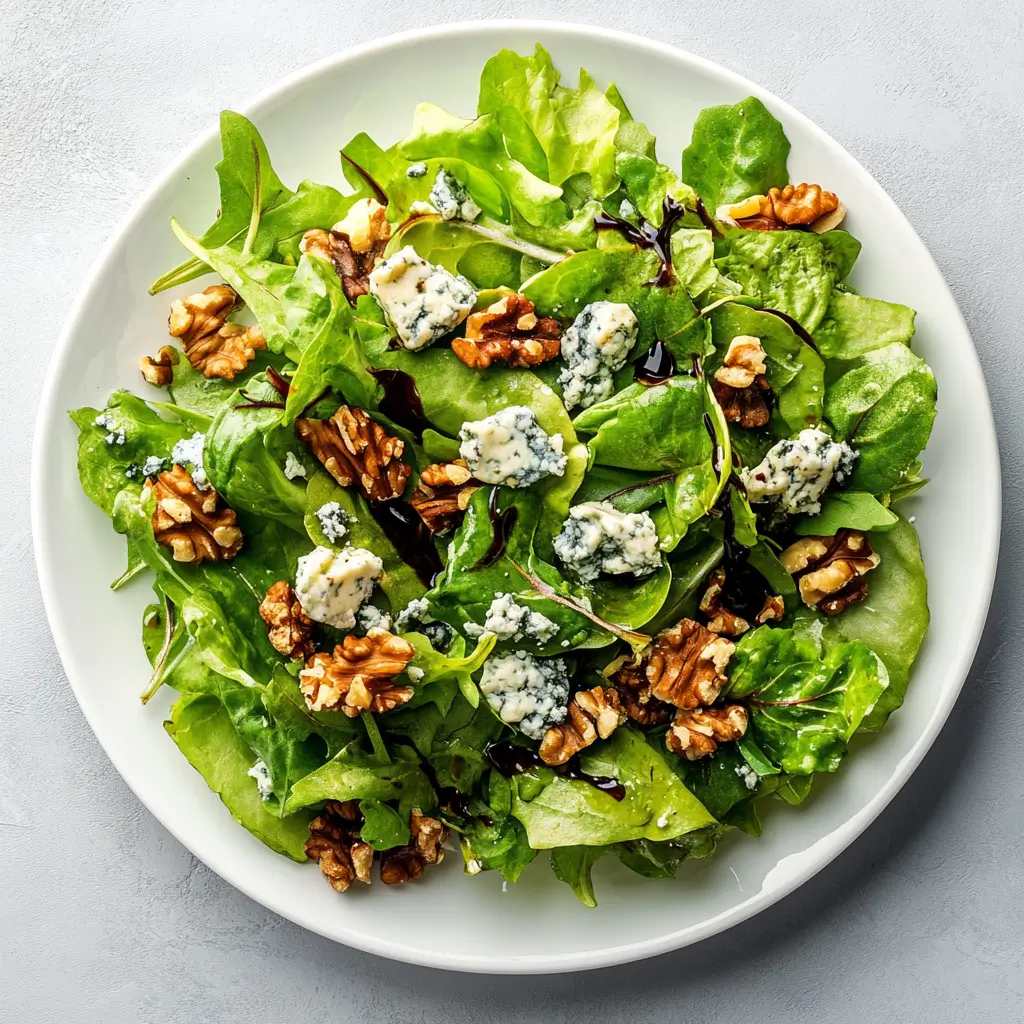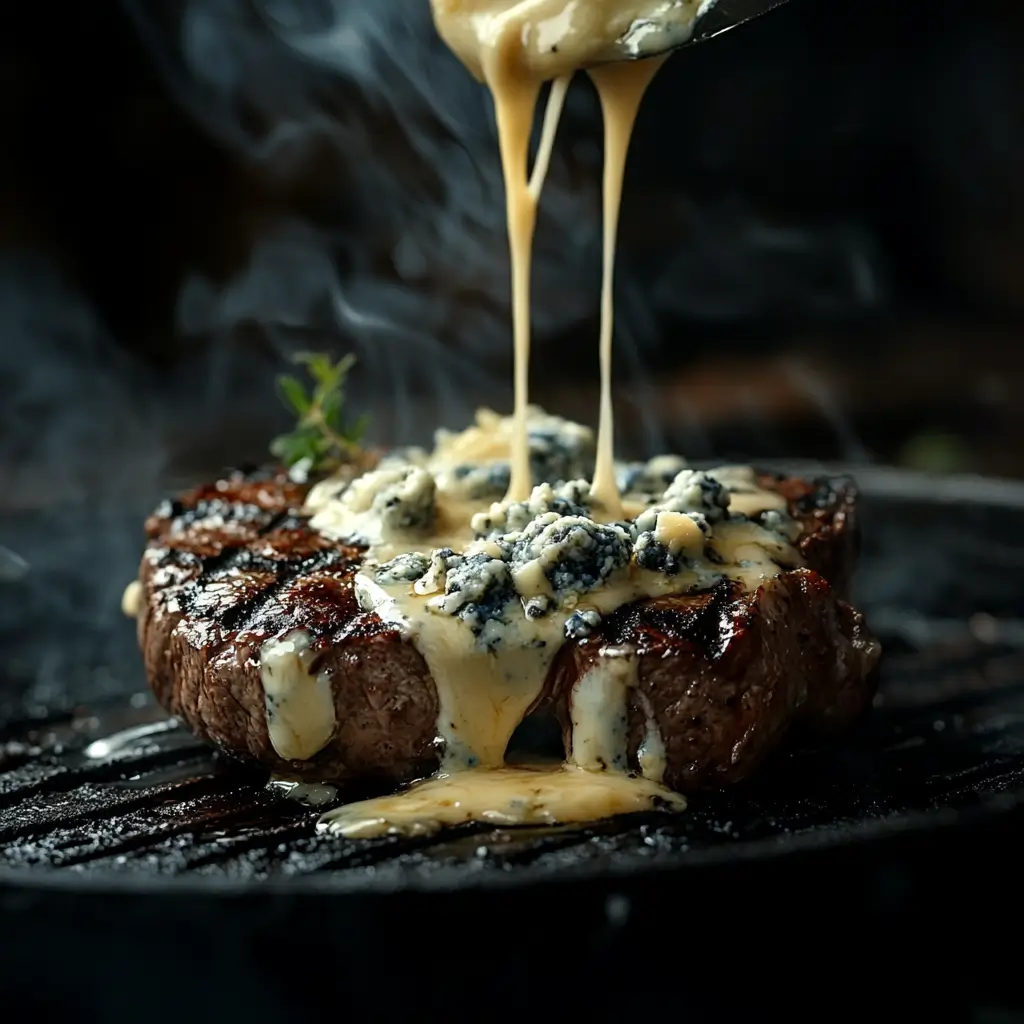Blue cheese crumbles are a flavorful, tangy addition to many dishes. Their sharp, salty taste enhances everything from salads and burgers to pasta and dressings. While some find their pungent aroma overwhelming, others love the creamy, crumbly texture that makes them a versatile ingredient in both hot and cold recipes.
This guide explores the taste, health benefits, and best uses of blue cheese crumbles, providing tips on melting, pairing, and choosing the right variety. Whether you’re a seasoned cheese enthusiast or a curious beginner, you’ll learn how to make the most of this bold and distinctive cheese.
Table of Contents
What Does Blue Cheese Crumble Taste Like?
A Unique and Bold Flavor
Blue cheese crumbles have a strong, tangy, and slightly spicy taste that sets them apart from milder cheeses like cheddar or mozzarella. Their distinct flavor comes from Penicillium mold, which gives them blue-green veins and contributes to their pungency.
Flavor Profile Breakdown
- Sharp & Salty: The high salt content enhances the intensity of its taste.
- Tangy & Earthy: The fermentation process produces complex umami notes.
- Creamy Yet Crumbly: Though firm enough to crumble, blue cheese softens when warmed.
Why Some People Love It (and Others Don’t)
Blue cheese crumbles are not for everyone. Some enjoy the depth of flavor, while others find them too strong. If you’re unsure, try milder varieties like Danish Blue or Gorgonzola before diving into Roquefort or Stilton, which have sharper, more aggressive flavors.
How Aging Affects Taste
Blue cheese changes dramatically as it ages.
| Age | Taste Characteristics |
|---|---|
| Young (2-3 months) | Mild, creamy, with a subtle tang. |
| Mid-aged (4-6 months) | Balanced sharpness, more pronounced umami notes. |
| Aged (6+ months) | Strong, pungent, with intense saltiness. |
For those who prefer a gentler flavor, younger blue cheeses are the best choice.

Are Blue Cheese Crumbles Healthy?
Many assume blue cheese is unhealthy due to its high fat and sodium content, but it actually offers several nutritional benefits. When eaten in moderation, it can be a great addition to a balanced diet.
Nutritional Breakdown (Per 1 oz. Serving)
| Nutrient | Amount | Benefit |
|---|---|---|
| Calories | ~100 kcal | Provides sustained energy. |
| Protein | ~6g | Supports muscle repair and growth. |
| Fat | ~8g | Contains healthy fats for brain function. |
| Calcium | ~150mg | Strengthens bones and teeth. |
| Probiotics | High | Supports digestion and gut health. |
Key Health Benefits
- Boosts Gut Health – The probiotics in blue cheese aid digestion and strengthen the immune system.
- Strengthens Bones – With high calcium and phosphorus, it supports bone density and strength.
- May Reduce Inflammation – Some studies suggest that blue cheese contains anti-inflammatory compounds that benefit heart health.
However, blue cheese is high in sodium, so individuals with hypertension or kidney issues should consume it in moderation.
Blue Cheese Crumbles vs. Feta: What’s the Difference?
How Do These Two Cheeses Compare?
Blue cheese and feta look similar when crumbled, but their taste, texture, and best uses differ significantly.
| Feature | Blue Cheese | Feta Cheese |
|---|---|---|
| Color | White with blue-green veins | Bright white, no veins |
| Texture | Creamy but crumbly | Dry, slightly grainy |
| Flavor | Strong, tangy, salty | Briny, mildly tangy |
| Best Uses | Salads, burgers, sauces, steaks | Mediterranean dishes, Greek salads, pastries |
When to Use Each
- Use blue cheese when you want bold, tangy, and creamy flavors (e.g., on burgers or in dressings).
- Choose feta when you need a milder, salty cheese for Mediterranean or Greek-inspired dishes.
Both cheeses add depth to recipes, but blue cheese is much more pungent, making it better for dishes where strong flavors are desired.

Can You Melt Blue Cheese Crumbles?
Absolutely! While blue cheese doesn’t melt like cheddar or mozzarella, it does soften and blend into sauces beautifully.
Best Methods for Melting Blue Cheese
- On the Stove: Combine blue cheese with butter and cream to create a rich sauce for steaks or pasta.
- In the Oven: Sprinkle crumbles over a hot dish and broil for a crispy, melted texture.
- Microwave: Heat in short intervals, stirring frequently to prevent separation.
Best Dishes for Melted Blue Cheese
- Blue Cheese Sauce – Ideal for steaks, wings, and pasta.
- Blue Cheese Burgers – Melts into a creamy, bold topping.
- Roasted Vegetables – Adds depth and richness to roasted potatoes or Brussels sprouts.
For best results, use a creamy blue cheese variety like Gorgonzola Dolce when melting.
What Pairs Well with Blue Cheese Crumbles?
Perfect Food Combinations
Blue cheese crumbles have a complex, tangy, and salty flavor that pairs best with ingredients that either balance or enhance their boldness. The best pairings fall into three main categories: sweet, salty, and umami-rich foods.
1. Fruits That Complement Blue Cheese
The natural sweetness of fruits softens the pungency of blue cheese, creating a harmonious contrast. Some top choices include:
- Pears & Apples: Their crisp, juicy texture balances blue cheese’s creamy and salty profile.
- Figs & Dates: Their rich, honey-like sweetness enhances the cheese’s deep, earthy notes.
- Grapes: Their burst of freshness refreshes the palate between bites of blue cheese.
2. Meats & Proteins That Work Well
Protein-rich foods provide a savory foundation that allows blue cheese crumbles to shine. Some ideal pairings include:
- Steak & Burgers: The bold umami flavor of beef complements the sharpness of blue cheese.
- Chicken & Turkey: Blue cheese crumbles add richness to mild white meats.
- Bacon & Prosciutto: The crispy, salty nature of cured meats contrasts beautifully with blue cheese’s creaminess.
3. Bread & Crackers for Serving
Pairing blue cheese with the right type of bread or cracker enhances its texture and flavor. Consider:
- Walnut Bread: The nutty sweetness complements blue cheese’s sharp bite.
- Whole-Grain Crackers: These provide a hearty, crunchy contrast to soft crumbles.
- Sourdough Bread: Its tanginess enhances blue cheese’s natural acidity.
4. Best Nuts to Pair with Blue Cheese
Nuts add texture and depth to blue cheese-based dishes. The best options include:
- Walnuts & Pecans: Their mild, buttery sweetness balances blue cheese’s sharpness.
- Almonds: These provide a neutral, crunchy contrast without overpowering the cheese.
What Is Similar to Blue Cheese Crumbles?
For those who enjoy blue cheese’s bold flavor but want milder or alternative options, several cheeses offer a comparable experience.
1. Gorgonzola
- Taste: Creamy, mild, and slightly tangy.
- Best Uses: Perfect for salads, dressings, and pasta.
2. Roquefort
- Taste: The strongest of all blue cheeses, with an intense sharpness.
- Best Uses: Ideal for steak toppings, bold dressings, and gourmet sandwiches.
3. Stilton
- Taste: Nutty and slightly sweet, with less pungency.
- Best Uses: Pairs well with fruits, nuts, and dark chocolate.
4. Feta Cheese
- Taste: Briny, salty, and tangy but without blue cheese’s moldy flavor.
- Best Uses: Great for Greek salads, omelets, and wraps.
FAQs
What Country Is Blue Cheese From?
Blue cheese originated in France, with Roquefort being one of the oldest known varieties. However, Italy (Gorgonzola), England (Stilton), and Denmark also produce world-renowned blue cheeses.
Are Blue Cheese Crumbles Healthy?
Yes, in moderation. Blue cheese crumbles provide protein, calcium, and probiotics, but they are also high in sodium and fat.
Can Blue Cheese Crumbles Be Used in Cooking?
Yes! Blue cheese crumbles are incredibly versatile in cooking. They can be used in salads, melted into sauces, sprinkled over burgers, mixed into dressings, or baked into dishes like casseroles and pizzas. Because of their strong, tangy flavor, they add depth and richness to a variety of recipes. When heated, blue cheese melts well, making it a great choice for creamy pasta sauces or gourmet grilled cheese sandwiches.
What Makes Blue Cheese Different from Other Cheeses?
Blue cheese stands out due to the presence of Penicillium mold, which gives it its signature blue or green veins. This mold contributes to its bold, tangy, and slightly pungent flavor. Unlike milder cheeses, blue cheese undergoes a distinct aging process that promotes mold development inside the cheese, resulting in a crumbly or creamy texture, depending on the variety. Other cheeses, like cheddar or mozzarella, lack this mold and typically have a more uniform texture and milder taste.
Can You Freeze Blue Cheese Crumbles?
Yes! Store them in an airtight container and freeze for up to 6 months. However, the texture may become slightly crumbly after thawing.
Does Blue Cheese Contain Lactose?
Blue cheese contains very low levels of lactose, making it easier to digest for those who are lactose-intolerant. Most of the lactose in cheese is broken down during the aging process, and since blue cheese is aged, its lactose content is minimal. However, those with severe lactose intolerance or dairy allergies should still check how their body reacts before consuming it.
Conclusion
Blue cheese crumbles add bold flavor, creaminess, and depth to a wide variety of dishes. Whether you sprinkle them on salads, melt them into sauces, or pair them with fruits and wines, they bring a unique, gourmet touch to any meal.
By understanding their taste, health benefits, and perfect pairings, you can confidently incorporate blue cheese crumbles into your cooking. Try experimenting with different varieties to find the one that suits your palate best.
